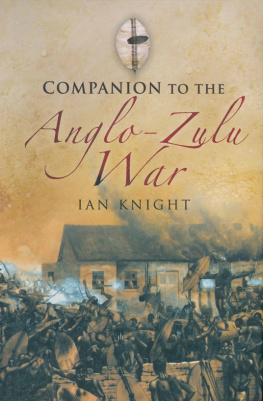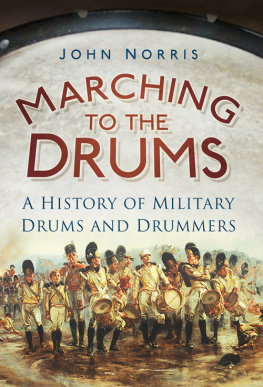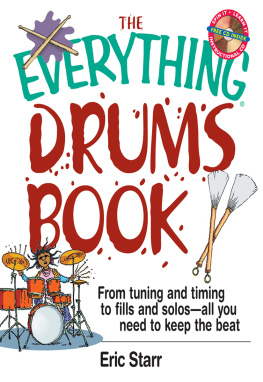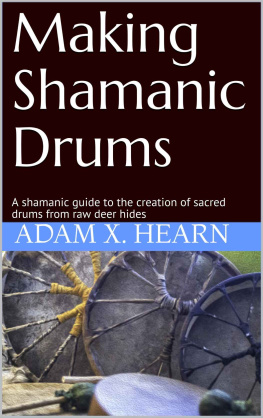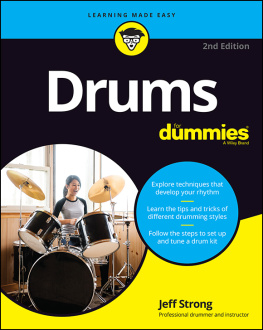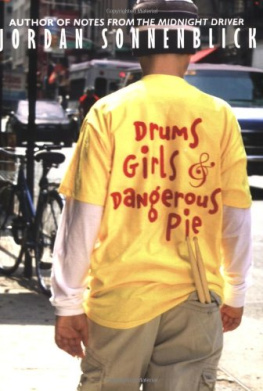Ian Knight - Marching to the Drums
Here you can read online Ian Knight - Marching to the Drums full text of the book (entire story) in english for free. Download pdf and epub, get meaning, cover and reviews about this ebook. year: 2015, publisher: Frontline Books, genre: Non-fiction. Description of the work, (preface) as well as reviews are available. Best literature library LitArk.com created for fans of good reading and offers a wide selection of genres:
Romance novel
Science fiction
Adventure
Detective
Science
History
Home and family
Prose
Art
Politics
Computer
Non-fiction
Religion
Business
Children
Humor
Choose a favorite category and find really read worthwhile books. Enjoy immersion in the world of imagination, feel the emotions of the characters or learn something new for yourself, make an fascinating discovery.

- Book:Marching to the Drums
- Author:
- Publisher:Frontline Books
- Genre:
- Year:2015
- Rating:4 / 5
- Favourites:Add to favourites
- Your mark:
- 80
- 1
- 2
- 3
- 4
- 5
Marching to the Drums: summary, description and annotation
We offer to read an annotation, description, summary or preface (depends on what the author of the book "Marching to the Drums" wrote himself). If you haven't found the necessary information about the book — write in the comments, we will try to find it.
Marching to the Drums — read online for free the complete book (whole text) full work
Below is the text of the book, divided by pages. System saving the place of the last page read, allows you to conveniently read the book "Marching to the Drums" online for free, without having to search again every time where you left off. Put a bookmark, and you can go to the page where you finished reading at any time.
Font size:
Interval:
Bookmark:

A Greenhill Book
First published in 1999 by Greenhill Books, Lionel Leventhal Limited
www.greenhillbooks.com

Frontline Books
an imprint of Pen & Sword Books Ltd,
47 Church Street, Barnsley, S. Yorkshire, S70 2AS
For more information on our books, please visit
or write to us at the above address.
The collective work Lionel Leventhal Ltd, 1999
PDF ISBN: 978-1-84832-243-1
EPUB ISBN: 978-1-84832-241-7
PRC ISBN: 978-1-84832-242-4
Elate | The British Empire at War | The Rest of the World |
183942 | First Afghan War | |
Opium War, China | ||
184144 | French campaigns in Algeria | |
184546 | First Maori War, New Zealand | |
1846 | First Anglo-Sikh War | Mexican/American War |
184647 | Seventh Cape Frontier War, South Africa | |
1848 | Year of Revolutions, Europe | |
184849 | Second Anglo-Sikh War | |
185053 | Eighth Cape Frontier War, South Africa | |
185165 | Taiping Rebellion, China | |
1852 | Second Burma War | |
185456 | Russian War (Crimea, etc) | |
185660 | Dagu Forts expeditions, China | |
185758 | Indian Mutiny | |
185759 | French campaigns, north Africa | |
185984 | French conquest of Indo-China | |
186072 | Second Maori War, New Zealand | |
186165 | American Civil War | |
186386 | U.S./Apache Wars | |
1865-89 | Plains Wars, USA | |
1866 | Prussian/Austrian War | |
1868 | Abyssinian expedition | |
1870 | Franco-Prussian War | |
1873-74 | Asante campaign, West Africa | |
1877-78 | Russo-Turkish War | |
1878-80 | Second Afghan War | |
1879 | Anglo-Zulu War | |
1881 | Transvaal War (First Boer War) | |
1882 | Egyptian expedition | |
1884-99 | Sudanese campaigns | |
1885-92 | Third Burma War | |
1892 | French expeditions, West Africa | |
1894-96 | Italian/Abyssinian War | |
1898 | Spanish/American War | |
1899-1900 | Boxer Rebellion, China | |
1899-1902 | Anglo-Boer War |

Font size:
Interval:
Bookmark:
Similar books «Marching to the Drums»
Look at similar books to Marching to the Drums. We have selected literature similar in name and meaning in the hope of providing readers with more options to find new, interesting, not yet read works.
Discussion, reviews of the book Marching to the Drums and just readers' own opinions. Leave your comments, write what you think about the work, its meaning or the main characters. Specify what exactly you liked and what you didn't like, and why you think so.


